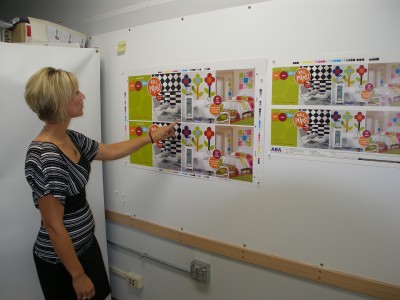By Bruce Ridge
While sign shops and other wide-format print providers have long offered colour matching capabilities, in most cases, the process remains impractical and inefficient. Today, the non-profit International Digital Enterprise Alliance’s (IDEAlliance’s) G7 methodology for calibration in four-colour process printing instead pursues the goal of ‘common appearance.’
This will offer significant benefits for both digital printing and analogue commercial printing, in terms of producing images more efficiently.
Industry endorsement
In January 2010, at the Specialty Graphic Imaging Association (SGIA’s) annual Congress of Committees, the graphic production group voted to recommend G7 as the preferred method for the reproduction of full-colour images through inkjet and screenprinting processes.
This was noteworthy because signmakers never had a process-colour printing method or specification before that could accommodate the varieties of media, substrates and inks used in their industry. The durable pigments in wide-format graphic inks, for example, can involve very different hues and densities compared to offset printing specifications for colour matching. Such issues had made it difficult to impossible for the industry to reproduce commercial proofing targets.
The SGIA endorsement also validated the efforts of early adopters, who had already invested time and money into learning and following the G7 process.

Signmakers have faced difficulties reproducing commercial proofing targets, due to differences in ink hues and densities compared to offset printing specifications for colour matching.
New motivation
Originally, one of the main motivations for print providers to commit to implementing the G7 methodology in their facilities was the notion that print buyers would soon be demanding it. After all, if a new colour control process could help make images appear similar across different printing platforms, formats, resolutions and substrates, who wouldn’t want that?
Initially, however, the customer demand did not emerge. Instead, what kept interest in G7 alive in the industry were the methodology’s immediate benefits in production efficiency and in providing a distinctive way to compare images. So, once these print providers were committed to the process, its true value to production became apparent.
The G7 methodology separates and controls the printing of process colour graphics by targeting a neutral print density in the 25, 50 and 75 per cent tonal areas of the image. The result is a common or shared appearance, but G7 is the first colour specification that does not dictate how to get to that final destination; it simply specifies what that destination is. How to get there is up to the print provider’s own process and procedures. Hence, G7 is not process-specific and can be applied to all types of printing.






